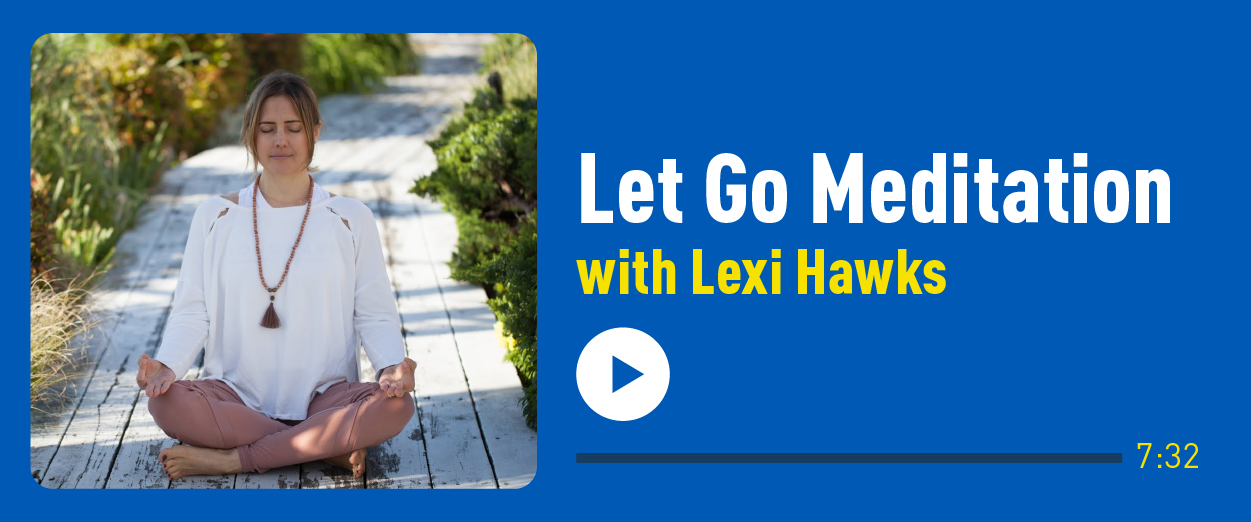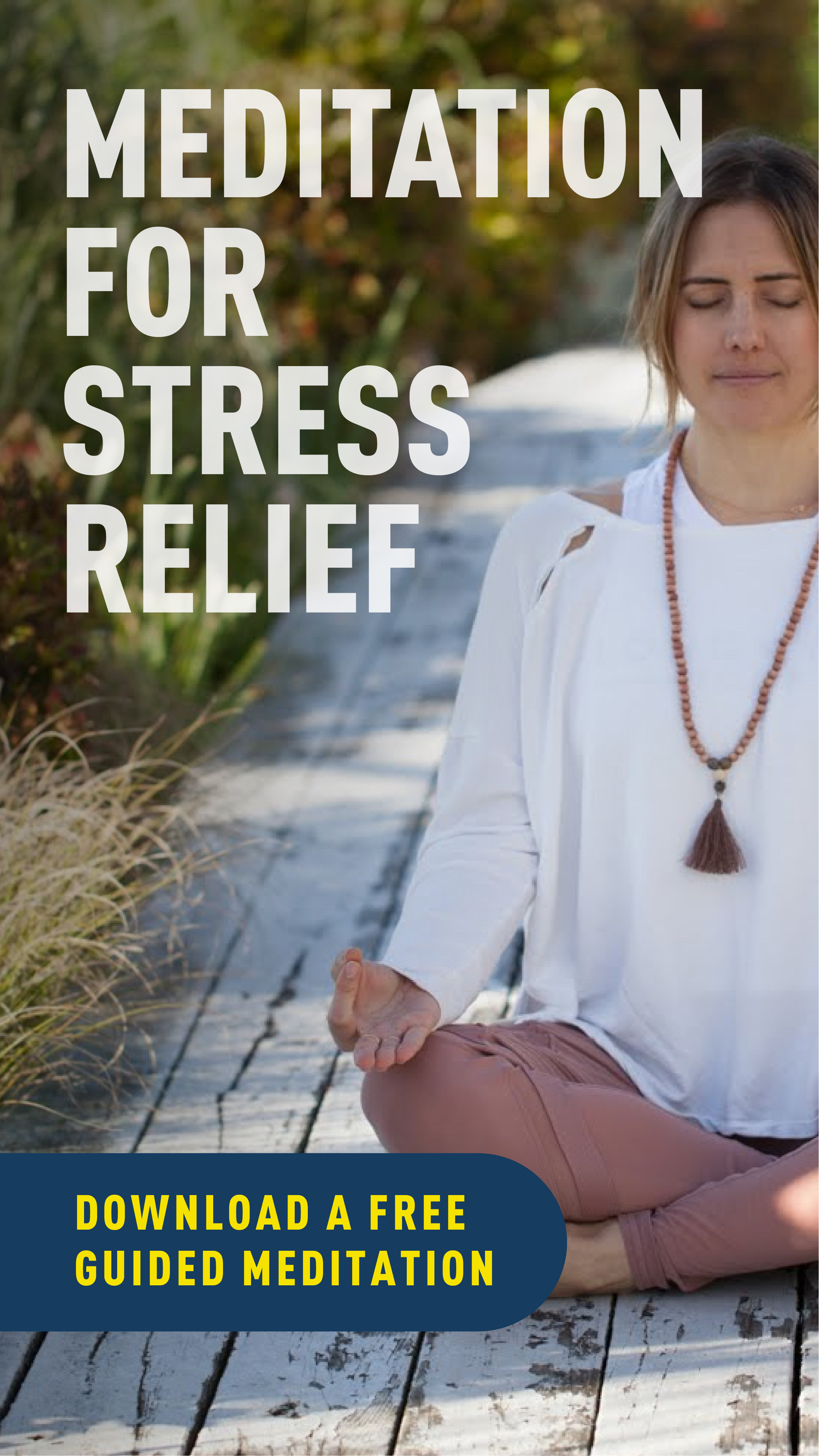Expert Advice

Acella Pharmaceuticals is partnering with Lexi Hawks, an E-RYT 500 Hr Yoga Alliance Certified Teacher, to bring greater awareness to the importance of thyroid care and education. This post was sponsored by Acella Pharmaceuticals.
Disclaimer: The information provided is for educational purposes only and does not substitute professional medical advice. Consult a medical professional or healthcare provider before beginning any exercise, fitness, diet, or nutrition routine. Acella Pharmaceuticals does not endorse, promote or sponsor any products or brands mentioned in this article. The views expressed here are those of the author.
While it’s a big buzz word right now, meditation is not new. In fact, it’s been practiced for thousands of years. Meditation is a gift from the yogic traditions that, according to historical timelines, surfaced some 5,000 years ago.
The word meditation can mean both the practice of a single pointed focus in the here-and-now and a state of obtaining total presence. The practice of meditation has been catching the interest of western medicine doctors and researchers in recent years because the effects of a regular meditation practice are astounding.
Neuroscientists have studied the effects of meditation by looking at MRI scans and have found that with a regular meditation practice, people can change the structure and function of their brains. In fact, specific parts of the brain are built that are associated with emotional control and focus, while other areas of the brain, like the amygdala, are reduced in size. The amygdala is responsible for initiating anxiety, stress, fear and aggression.
A study from Johns Hopkins Medicine published online in JAMA Internal Medicine showed that 30 minutes of daily meditation appeared to provide as much relief from some anxiety and depression symptoms as was found in other studies of people who took antidepressant medications.1 Best yet, meditation is shown to have zero negative effects.
Another study completed at the Wellness Institute at the Cleveland Clinic found that employees who participated in an eight-week online stress management course, which included mindfulness techniques such as meditation, reported a significant decrease in stress and anxiety.2 After using these techniques for just eight weeks, employees seemed to have developed a new skill set that allowed for lasting change. This study specifically followed up with the employees a year after the training and found a continued 31% decrease in stress levels.
So how does one “DO” meditation, you ask?
Before we start, it’s important to note that there are many different meditation methods, and it’s important to find a technique that suits you. I've provided a simple and beginner-friendly mediation that uses the breath and a mantra to help hold one’s attention. By doing this, one trains the mind to stay focused on the chosen object (which in this meditation is breath and a phrase). It also may help limit the fluctuations of the mind.
It is natural for the mind to wander. When you become aware that the mind has become disengaged from the breath/mantra, gently and compassionately guide your awareness back to the breath and phrase. Do this as many times as is necessary.
Quick start guide:
1. Choose a time. Pick a consistent time of day, preferably first thing in the morning or later in the evening.
2. Find your setting. Have a meditation place that is set up with the necessary support for sitting. Consider using a meditation cushion, bench or folded blankets to sit comfortably with a long spine. If you need to sit in a chair or with your back against a wall for additional support, that's OK.
3. Flush your mind. Give yourself one minute to two minutes to let the mind wander and allow the body to get any wiggles out.
4. Set the Mood. Set your timer for five minutes (this can gradually increase). I also recommend setting a gentle, soothing sound or putting the timer on vibrate so as to not startle you upon ending.
5. Turn inward. Close your eyes and be still.
6. Focus on your breathing. Let your breath be natural and start to observe your breath. Feel your breath inhale and expand the body and feel your breath exhale as the body contracts. Allow your mind to follow your breath in and out. Give yourself some time to explore the breath with awareness. Start to add a simple and effective mantra to the process. When you inhale, say within the mind “Let” and as you exhale, say within the mind “go” … Inhale “Let”; Exhale “go” … Inhale “Let,” Exhale “go” … Continue until the timer goes off.
Troubleshooting
One of the tricky parts of starting a mediation practice is simply starting. For people who are busy and stressed it can feel hard to add one more thing to the to-do list. Often people share with me that it feels like a waste of time because they are “just sitting there.” As we have learned through the research, meditation is powerful once we can dedicate ourselves to a consistent practice. Starting a new habit is not easy, but the stress release and other effects are profound and well worth staying dedicated.
As you become more comfortable sitting for five minutes, increase your time by a minute each week or month until you reach 20 or 30 minutes. You do not need to keep this as a hard rule. There might be days where five minutes is what it has to be, and that is okay.
Plan on meditation being a challenge. There will be days when your mediation practice flies by and there will be days when each minute feels like an eternity. Try to refrain from judging your meditation ability or the quality of a particular meditation. Meditation cannot be “good” or “bad.” Meditation just is, and the practice is the point.
Many people find guided meditations to be extremely helpful, particularly when first starting a practice. I’ve included some of my favorite meditation apps below that can also help your get started. Have fun exploring the vast world of meditation, and welcome the inner peace that is sure to emerge.
Let Go Mediation
Try this meditation to get started on your mindfulness journey!

Meditation Apps
Here are some meditation apps that I recommend to help you get started on your meditation journey:
• Insight Timer • Calm • Headspace

REFERENCES: 1. Goyal M, Singh S, Sibinga EMS, et al. Meditation Programs for Psychological Stress and Well-being: A Systematic Review and Meta-analysis. JAMA Intern Med. 2014;174(3):357–368. doi:10.1001/jamainternmed.2013.13018. 2. Allexandre, Didier PhD; Bernstein, Adam M. MD, ScD; Walker, Esteban PhD; Hunter, Jennifer MSW, LISW-S; Roizen, Michael F. MD; Morledge, Thomas J. MD A Web-Based Mindfulness Stress Management Program in a Corporate Call Center, Journal of Occupational and Environmental Medicine: March 2016 - Volume 58 - Issue 3 - p 254-264 doi: 10.1097/JOM.0000000000000680
1753-v1
Note that DTE products, including NP Thyroid®, have not been reviewed by the FDA for safety or efficacy.
IMPORTANT RISK INFORMATION, INCLUDING BOXED WARNING & INDICATIONS
Important Risk Information
Drugs with thyroid hormone activity, alone or together with other therapeutic agents, have been used for the treatment of obesity. In euthyroid patients, doses within the range of daily hormonal requirements are ineffective for weight reduction. Larger doses may produce serious or even life-threatening manifestations of toxicity, particularly when given in association with sympathomimetic amines such as those used for their anorectic effects.
- NP Thyroid® is contraindicated in patients with uncorrected adrenal insufficiency, untreated thyrotoxicosis, and hypersensitivity to any component of the product.
- In the elderly and in patients with cardiovascular disease, NP Thyroid® should be used with greater caution than younger patients or those without cardiovascular disease.
- Use of NP Thyroid® in patients with diabetes mellitus or adrenal cortical insufficiency may worsen the intensity of their symptoms.
- The therapy of myxedema coma requires simultaneous administration of glucocorticoids.
- Concomitant use of NP Thyroid® with oral anticoagulants alters the sensitivity of oral anticoagulants. Prothrombin time should be closely monitored in thyroid-treated patients on oral anticoagulants.
- In infants, excessive doses of NP Thyroid® may produce craniosynostosis.
- Partial loss of hair may be experienced by children in the first few months of therapy but is usually transient.
- Adverse reactions associated with NP Thyroid® therapy are primarily those of hyperthyroidism due to therapeutic overdosage.
- Many drugs and some laboratory tests may alter the therapeutic response to NP Thyroid ®. In addition, thyroid hormones and thyroid status have varied effects on the pharmacokinetics and actions of other drugs. Administer at least 4 hours before or after drugs that are known to interfere with absorption. Evaluate the need for dose adjustments when regularly administering within one hour of certain foods that may affect absorption.
- NP Thyroid® should not be discontinued during pregnancy, and hypothyroidism diagnosed during pregnancy should be promptly treated.
Indications
NP Thyroid® (thyroid tablets, USP) is a prescription medicine that is used to treat a condition called hypothyroidism from any cause, except for cases of temporary hypothyroidism, which is usually associated with an inflammation of the thyroid (thyroiditis). It is meant to replace or supplement a hormone that is usually made by your thyroid gland.
NP Thyroid® is also used in the treatment and prevention of normal functioning thyroid goiters, such as thyroid nodules, Hashimoto’s thyroiditis, multinodular goiter, and in the management of thyroid cancer.
Revised
10/2023
You Are About To Leave This Website
By clicking continue, this link will take you to a website to which Alora Pharmaceuticals’ Policies & Terms of Use do not apply.
^Based on prescriptions filled, NP Thyroid® is the #1 Prescribed DTE in the United States. Source: IQVIA National Prescription Audit (NPA) data on file. Acella Pharmaceuticals, LLC.
